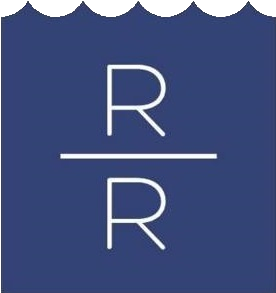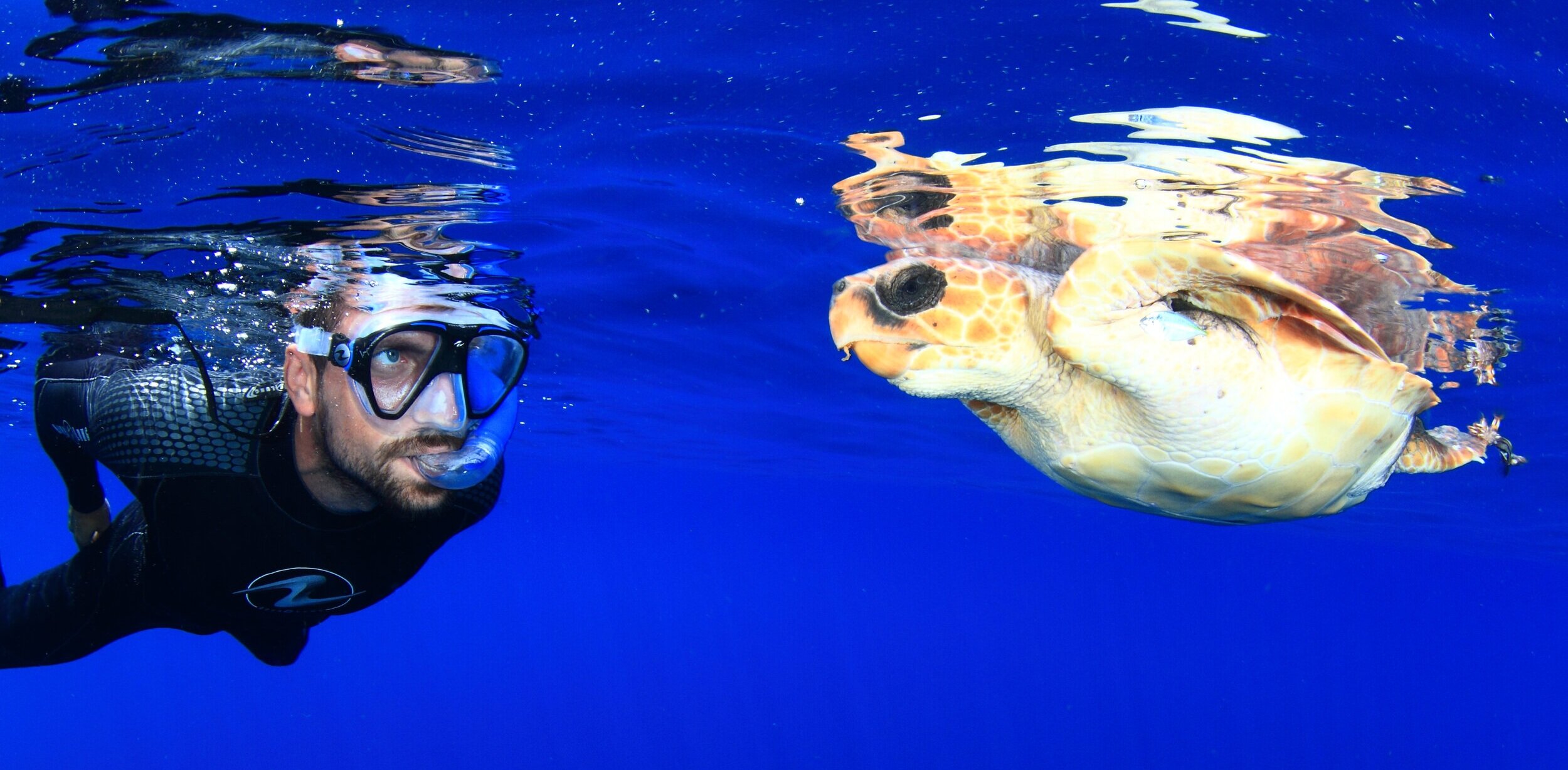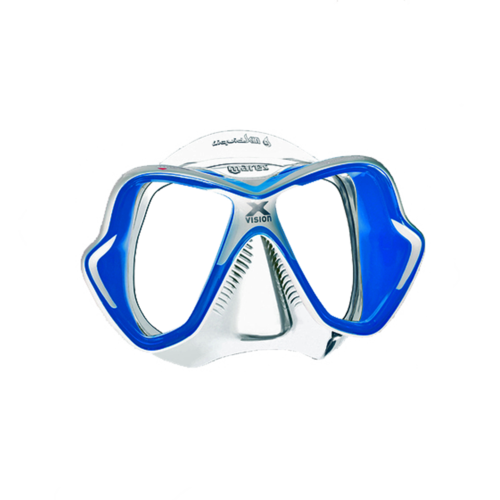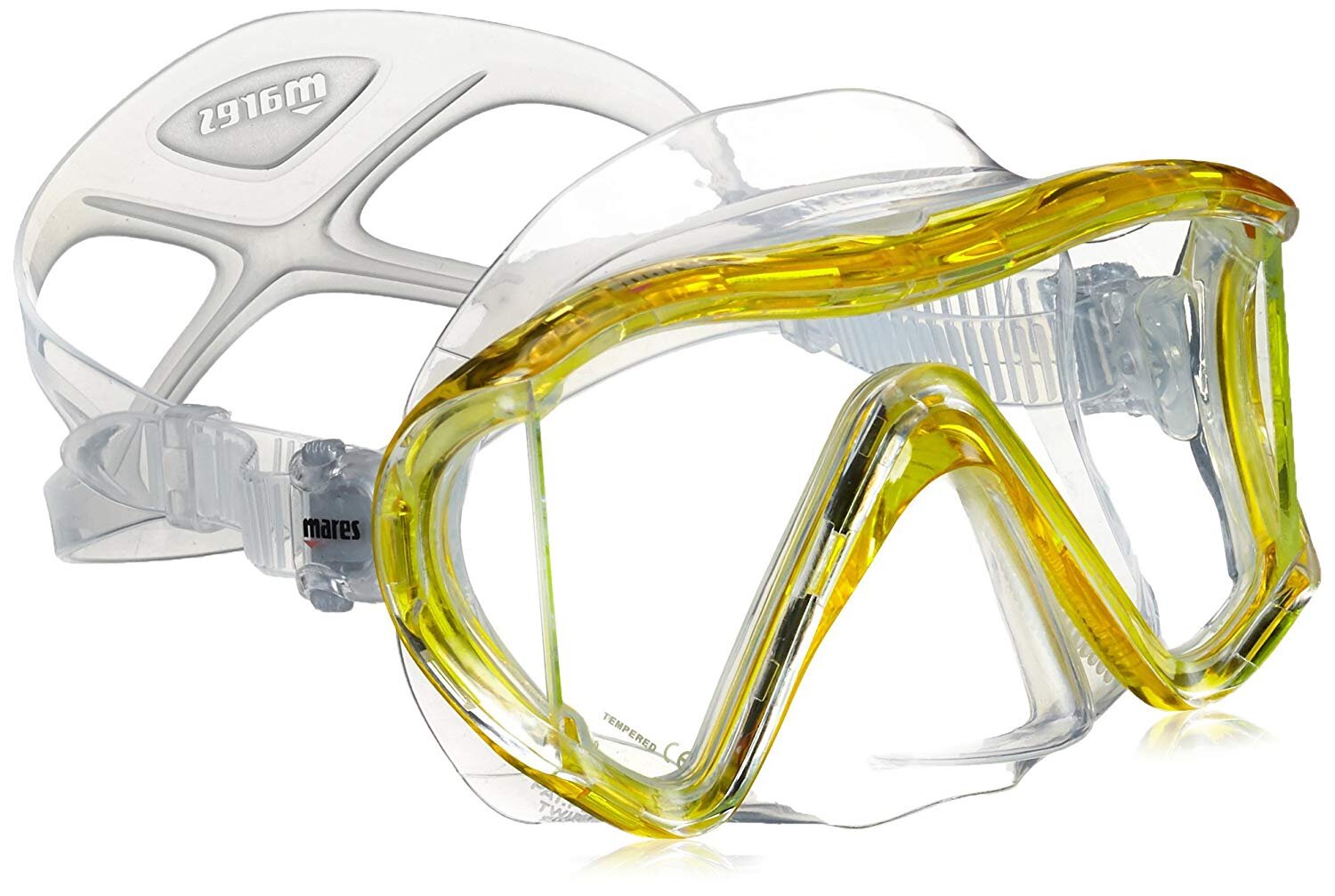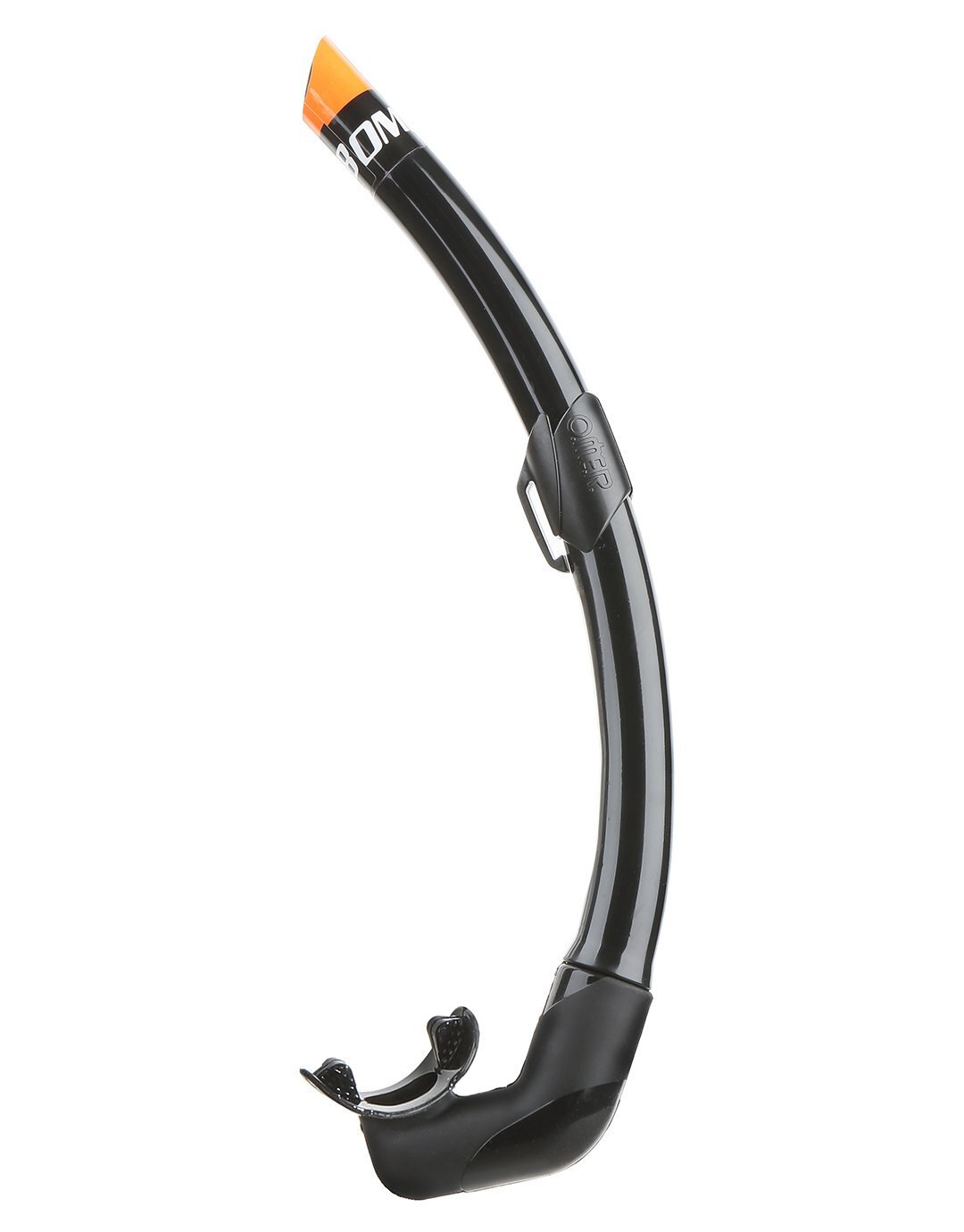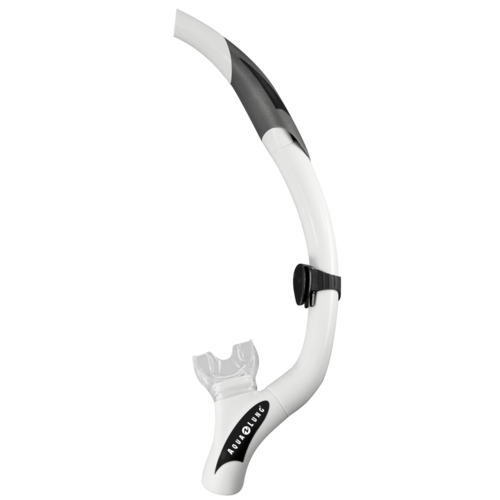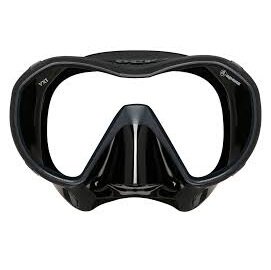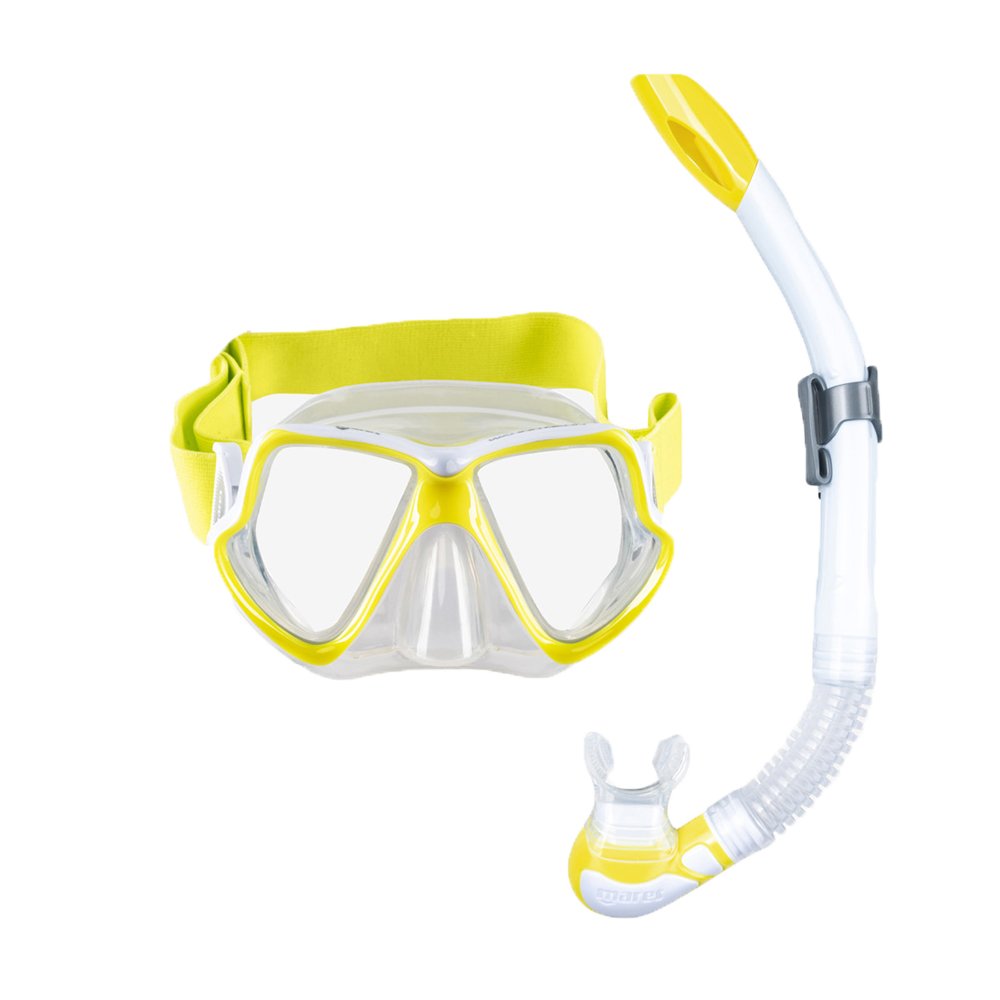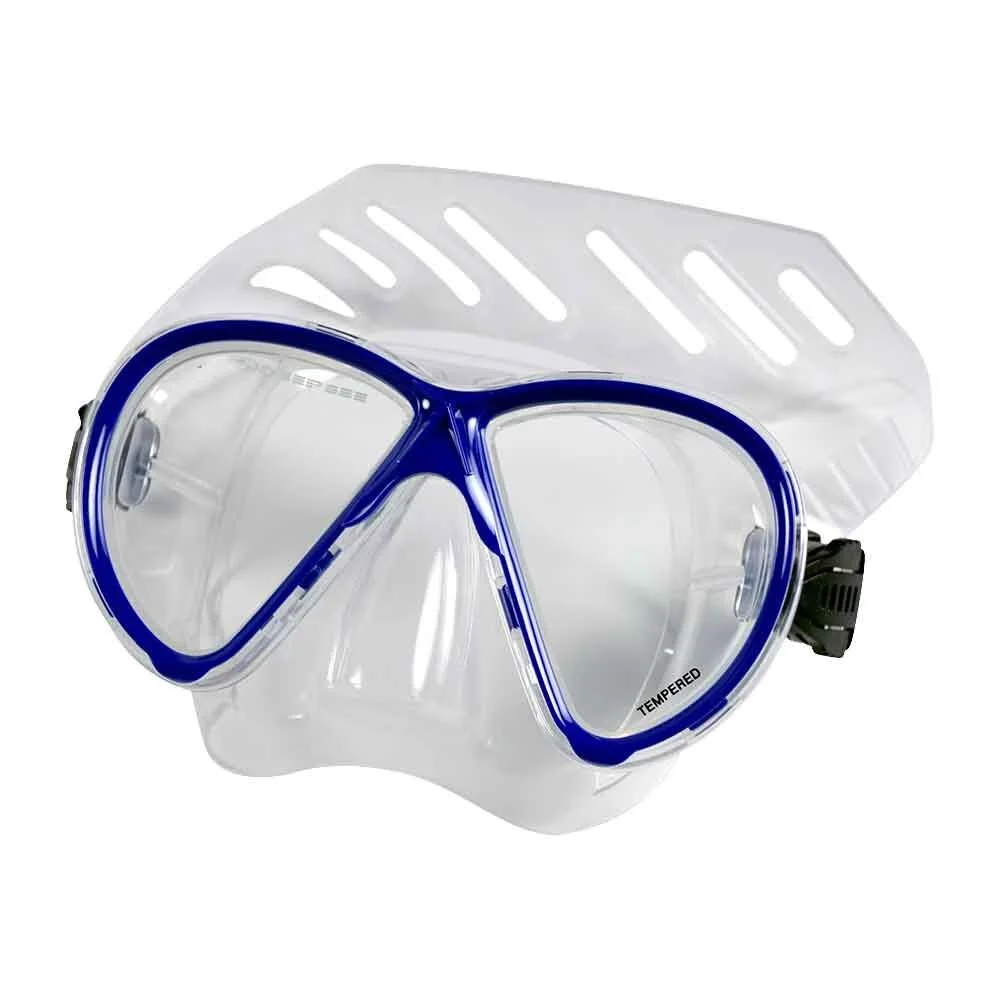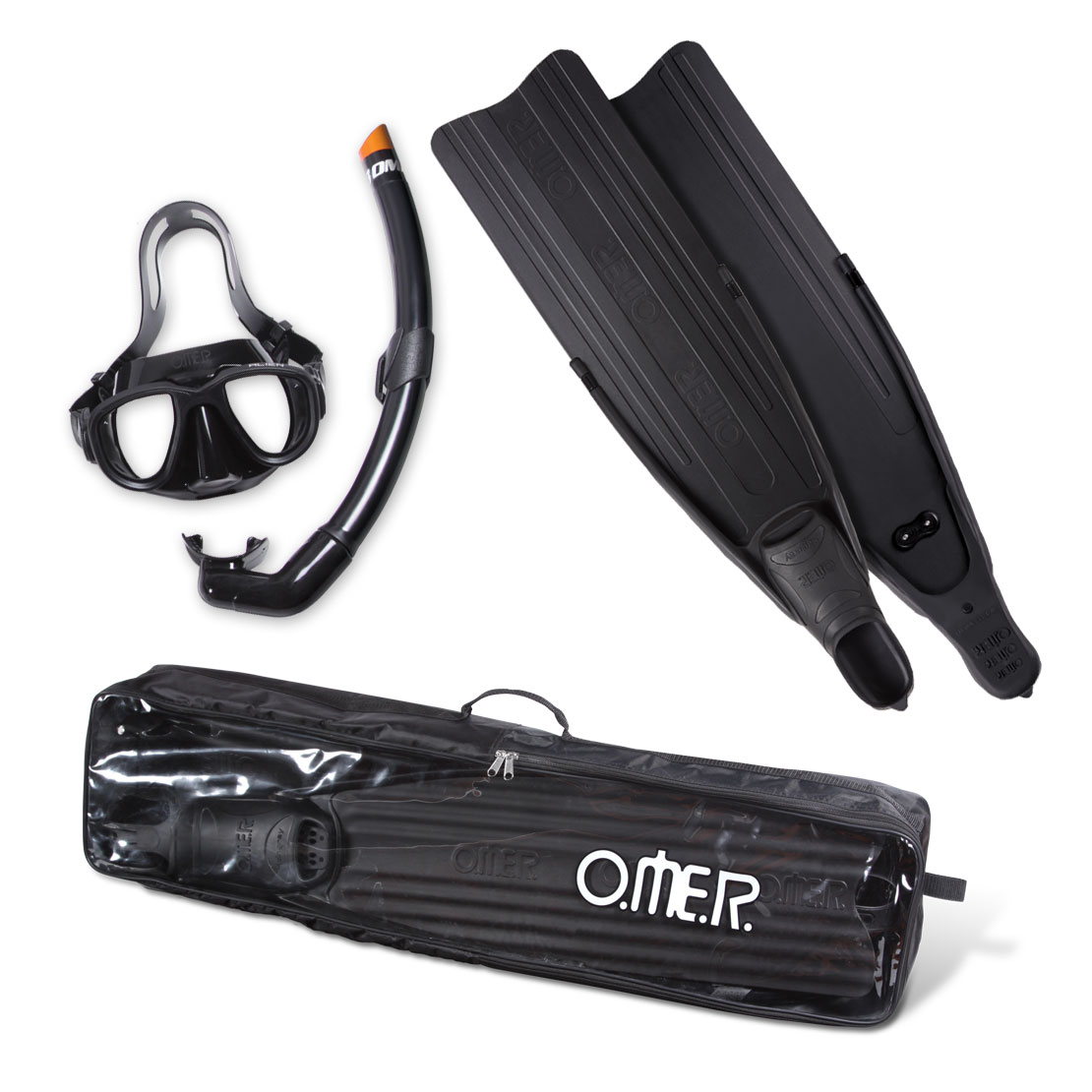Guide to Choosing Snorkeling Equipment
Snorkeling is an excellent cheap and easy way to explore the ocean and see the amazing life underwater. Good quality snorkeling gear will allow you to enjoy your time in the water in safety and comfort for years to come.
This Guide will help you find the best snorkeling equipment for you and your family ready for your next underwater adventure. Whether you are a first timer snorkeler, who may be a bit nervous and unused to swimming and exploring the ocean or an experienced pro snorkeler, who enjoys diving down and getting up close to the amazing life, this guide will cover everything you need to make your next snorkel trip as easy and as enjoyable as possible.
General Notes when buying Snorkel Equipment
When purchasing snorkel gear, we highly recommend avoiding very cheap supermarket or knock-off style snorkel sets. The reason for this is that these sets are often built with cheaper quality plastics on the buckles and straps, which often break and snap after a couple of uses. They use similar cheap plastics for the mask skirt and snorkel mouthpiece, meaning the masks don’t seal correctly which causes leaking, the plastic can irritate the skin and leave rashes and the cheap plastic leaves an unpleasant taste in your mouth. For some pieces of equipment, like the Full Face Snorkel Mask, a poor quality cheap knockoff can potentially be very dangerous when you use it in the water.
At Rowand’s Reef we only offer a range of quality snorkel equipment from highly reputable and dive-grade brands. We make sure that any snorkel gear we sell meets strict safety standards and offer comfortable, high quality performance to ensure you have the most fun and enjoyment every time you explore the underwater world.
It is better to be confident that what you buy will offer excellent performance, is comfortable and built to last, than buy a poor quality set which doesn’t give you the enjoyment you deserve and can end up ruining your snorkel experience.
To go snorkeling you only need a few pieces of gear: Mask, Snorkel and Fins. However, there are a few additional pieces of equipment which can MAXIMIZE your enjoyment and make snorkeling super easy!
Mask
Just like a pair of swimming goggles, a snorkel mask allows you to see underwater, by creating an airspace in front of your eyes. However, unlike swimming goggles, a snorkel mask is larger to allow you to see more and has a wide seal which sucks onto your face and also covers your nose. The seal or ‘skirt’ is to prevent water leaking into your mask and going up your nose. A comfortable mask that seals well is one of the most important pieces of equipment for snorkeling. To get a comfortable mask that performs well, you need to look at two things: fit and quality.
Quality
A mask can differ in quality quite significantly. A low quality mask will likely have a mask skirt made out of plastic, which is less flexible, doesn’t seal as well and can rub and cause rashes around your face. In contrast a high quality mask will use a soft, silicone skirt, which seals much better as it moulds to your face. It is also hypoallergenic meaning you can use it consistently without it giving you issues. In general, the softer the skirt the more expensive the mask, but as long as the silicone skirt seals your face well, it is certainly worth it. Other small quality differences include the strap buckle - poor quality buckles are made of cheap plastic and will break after a few uses. Good quality buckles allow easy adjustment of the strap and won’t break under constant use. In general a higher quality mask will last longer (i have had my snorkel mask for over 10 years and counting!) and perform better, which is exactly what you want when you go snorkeling.
Fit
Fit is a little more subjective to each person. Regardless of your face type or size, you want to make sure that there are certain requirements met that indicate a good fitting mask. Firstly you want to do the suction test - place the mask on your face without the strap. Breathe in through your nose. You should feel the mask suck and squeeze onto your face and stay on whilst you hold your breath. If the mask comes loose or you hear air sneak through the seal when your breathe in, then it is likely the mask does not fit. A mask that sucks onto your face will ensure you have a good seal and no leakage in the water. Once you know your mask seals, you want to check comfort zones along the temples, the bridge of your nose and the upper lip. Make sure the mask doesn’t push onto you or feel tight and uncomfortable in these areas. If they all feel good and comfy, then you have a well fitted mask.
other considerations
Only after you are happy that these two requirements are met, should you then consider price and style/color. As mentioned above, price will tend to increase with higher quality masks, but it is usually worth the investment if you intend to go snorkeling again anytime in the next 5+ years. Co lour & style is obviously very dependent on personal preference. There are many different styles of mask: single lens masks only have 1 window to see out of. 2 lens masks have two windows, which makes optical lens use easier, should you wear glasses and need them to see clearly in the water. You may also see masks with little side windows to allow you to see more in your periphery. The color of the skirt can also differ between a clear translucent (which lets more light in) or opaque colored skirt (which allows for a clear focus line out of the lens). Our advice is to try on as many of these different style and color masks as possible, and as long as they fit and are of good quality - go with whatever mask you like the best!
Once you have your new mask don’t forget to treat it before going into the water! Treating it is required to stop the mask from fogging up the first time you use it.. Read our Instruction Guide to Treating Your New Mask here for directions.
Snorkel
As you can probably guess, a snorkel is pretty important if you want to go snorkeling. A snorkel is essentially a tube that allows you to keep your face in the water but keep breathing air from the surface. Being able to keep your face in the water whilst breathing is the whole point of snorkeling as it gives you the chance to explore the ocean with ease and see more underwater.
Types of Snorkel
There are a few different types of snorkels available to buy, all of which have different features aimed at making your breathing easier and more comfortable:
A Wet snorkel will be a tube that will fill with water if you dive down or a wave comes over the top of you. To continue breathing from a wet snorkel that is full with water you first have to blow hard to expel any water out of the tube. This is known as clearing your snorkel. Some wet snorkels will have small one-way valves at the bottom of the snorkel to make clearing it easier and require less effort. Snorkels without this valve (such as freediving snorkels) are much harder to clear as you have to blow hard enough to push the water back up and out of the tube. Wet snorkels work fine if you are used to clearing your snorkel regularly and you don’t mind occasionally getting water in your mouth. They are also among the cheapest snorkels available as they are a very simple design and easy to produce.
Semi-Dry Snorkels are designed to channel the water away from the top of the tube and by that reduce the amount of water that goes into the snorkel and require clearing out before breathing. They will almost always have a one-way valve underneath the mouthpiece to make any clearing easier. Semi-Dry snorkels don;t have moving parts and rely upon innovative designs and channels built into the snorkel to prevent water or waves from filling up the tube. However they are not always 100% effective and especially if you enjoy diving down underwater, will sometimes fill up with some water and require clearing. They tend to be in the mid-range of snorkel prices.
Dry snorkels have moving pieces found at the top of the tube that are designed to completely seal the snorkeling tube off when under water and stop any water from going down the tube. They also have devices to prevent any waves from entering the tube. Dry snorkels are the most efficient at keeping the snorkel clear of water. Due to the extra complexity of design and parts included in dry snorkels, they tend to be at the most expensive end of the scale, but will give you as easy and comfortable snorkeling experience as possible. Dry snorkels will also usually come with extra features mentioned below, to give you everything you could possible want in a high quality and performance snorkel.
Travel Snorkels are wet or semi-dry snorkels that are made of a flexible material and have a tube that can squash and bend instead of being stiff and rigid. The flexibility allows them to roll up into a little bundle which can fit in a pocket and takes up less space when travelling.
Other Features and Considerations
Good quality Snorkel mouthpieces are made from hypo-allergenic silicone and should feel comfortable in your mouth. Avoid the plastic mouthpieces as these will often taste unpleasant after a couple of uses. Most snorkels have a standard size mouthpiece on them, however you can find some will have comfort-mouthpiece on, which feels much more comfortable in your mouth and reduces jaw fatigue.
Snorkel Clips are used to attach the snorkel to the mask strap and ensure it doesn’t come loose. Some clips are better quality than others and allow you to easily remove and replace the snorkel from the mask strap, whilst still keeping it secure when attached. Check to make sure that when you wear the mask and the snorkel is clipped on, it doesn’t slide or feel uncomfortable or become loose when you move your head.
When it comes to style/color of snorkels our advice is to find one your are happy to use and comfortable with first, then make sure it matches your mask!
Ultimately the choice of which snorkel is right for you will come down to your comfort and experience snorkeling in the water. If you want something that will make snorkeling and breathing easy and reduce the amount of water you have to clear, we recommend choosing a Dry Snorkel.
Full Face Mask
You may have heard or seen the latest innovation in snorkeling equipment: the Full Face Snorkel Mask. These are a one-piece unit that combines the mask and snorkel and covers your whole face, meaning you don’t have to have anything in your mouth and you can also breathe comfortably through your nose too. At first they may seem a bit strange and bulky, but can offer excellent advantages over a regular mask, such as built-in Anti Fog, a wider panoramic field of vision, and a wider and more comfortable face seal.
If you want to learn more about Full Face Snorkel Masks, check out a recent article we wrote which looks in greater depth at Full Face Masks and how they work, are they safe and whether you should you get one for your next snorkel adventure.
Fins
The most common way of moving quickly and efficiently through the water, the right fins can make your diving effortless! As simple as fins seem there is a lot of science that go into how they work. Understanding the different styles and features is important in deciding the right type of fin for you. However, despite differences in materials, construction and style, all fins consist of a large blade that provides resistance for pushing against the water and a foot pocket that secures the blade to your foot.
Types of Snorkel Fin
There are 2 main types of fin that you can use for snorkeling - open heel and full foot. Full foot fins slide over your feet like a shoe and are generally worn barefoot. This makes them quick and easy to put on and take off. Most full foot fins have smaller blades making then easy to travel with and so are often used in warmer waters. Open Heel Fins are generally larger, full power fins ideal for propelling you through the water quicker and easier. The open foot pocket will come in different sizes and are designed to be used with wetsuit boots to provide padding for a comfortable fit.
Design & Features
Generally the bigger and heavier the fin, the more power you will get from it, but the more effort it will require. This is why scuba fins are so large compared to snorkel fins. Without all the extra scuba gear to push through the water, snorkel fins are usually shorter, narrower and lighter, and require less effort when kicking. This also comes in very handy when travelling as most snorkel fins will easily fit in carry-on or small suitcases and will barely take up any weight.
You will often see a difference in quality of fins based on the materials they use and the different ribbing or venting features in the blade. Good quality fins will use a soft and comfortable silicone material for the foot pocket, whereas poorer quality fins will use stiff and uncomfortable silicone or rubber. The blade itself will use higher quality plastics and rubbers to increase its flexibility in the water, which makes it perform better. Lower quality fin blades will use a cheaper plastic which makes it harder and requires more effort to kick.
Ribs, Channels and Vents on fins are all designed to stabilize the fin and channel the water to reduce resistance. This make the performance of the fin more efficient and means there is less stress and effort when you kick while still allowing for greater speed and propulsion through the water. You will likely find these features on the higher end fins, as they are geared more to performance and comfort. If you enjoy snorkeling and plan on going a lot in the future, then these features are really worth the extra small investment compared to a basic fin with no vents, ribs or channels.
Fit
With fins, fit is very important. Just how a bad fitted mask can cause rubbing or leakage, a poorly fitted fin can cause rubbing, blisters or pain when you use them. The fit comes down to the foot pocket. Regardless of whether you are using open-heel fins with boots or full foot fins, you need to make sure that the foot pocket is snug and comfy around your foot, but not too tight that it is painful or uncomfortable and not too big or loose that your foot can slide out your the the fin wiggle/shuffles side to side when you kick. The properly fitting fin should feel like a natural extension of the leg and foot. Fins will usually always fit slightly bigger in the water, so ensure you have a very snug fit when trying it on in the shop.
Our Recommendation
Rowand’s Reef advise you to strongly consider purchasing your own fins over renting them if you are going away on a snorkel holiday. Unless you know the specific fins your may be renting, it could be likely that you cannot find a good fit and the rental fin could cause some of the issues mentioned above. Rental fins tend to be on the lower end of quality too meaning the foot pocket will be stiffer and more rigid material that increases the chance of a poor fitting and uncomfortable fin and also doesn’t give you the same level of performance your own fins would.
To find out more about different types of fin check out our Fins (not Flippers!)101 Article we wrote recently.
Additional snorkeling gear that may increase your enjoyment
Rash Guard
A Rash Guard is a stretchy lightweight long-sleeve or short sleeve top which has built in UV Sun Protection and dries very quick when you come out of the water. It is designed for watersports and use in the water, but can be equally nice to wear if you are relaxing on a beach or poolside. No more reapplying sun screen as you go in and out of the water - a rash guard will keep you protected from the sun and even provide a little bit of warmth in the water. They are also incredibly light and fold down very small making them perfect for travelling to warmer climates. They are available in tight fit or loose fit, depending if you want it more for sports use or casual wear and they come in all different colors and designs. Ultimately it is a must have for those sunny snorkeling adventures in the tropics!
Dry Bag
A Dry Bag is designed to keep anything you store inside it dry from the water, even if it the bag is completely submerged. You can get all sizes and types of dry bags that are waterproof to different depths - from small keys, wallet and mobile phone specific drybags to large drybags capable of storing all your gear including towel, change of clothes and any personals. If you don’t want to leave your belongings and valuables on the beach as you explore the water, most drybags can clip onto you, or will have a strap to attach. This way it can safely float with you without getting your items wet. Also if you want somewhere to put your soaking wetsuits, shorts, towel and other items are coming out of the water, a drybag keeps everything contained so you don’t drip and soak your dry clothes - definitely handy for the post-snorkel meals and drinks!
Snorkel Vest
For anyone who doesn’t know how to swim, or is snorkeling in a place with a bit of current, or simply wants to be more confident and comfortable at the surface when they are snorkeling, then we highly recommend a snorkel vest. Similar to a life-jacket but designed for a different purpose, a snorkel vest allows you to easily inflate and deflate the jacket. If you want to float and rest at the surface, just inflate it using the oral inflater. If you want to dive down and get up close to the underwater life, just deflate it and you are ready to go. Snorkel Vests will usually come in a high-vis color and will have useful features such as safety whistles and pockets built in. For anyone who wants security and safety when snorkeling, the snorkel vest is your best bet!
Mesh bag
With so many pieces of gear, having a mesh bag to carry everything is VERY useful. The mesh material allows any wet items to drain and you can even hang the mesh bag and let everything dry easily in the wind and sun. Keeping all your gear together in a mesh bag makes carrying everything to and from the beach/water super easy and definitely reduces the chance that you lose or forget an essential piece of equipment. Mesh bags will come in all shapes and sizes depending on you much gear you have and will usually be very inexpensive to buy. So have a look and find the one that works for you!
Neoprene Mask Strap
A mask strap is one of the most simple but effective pieces of snorkel gear. It is a Neoprene Cover that wraps over the silicone strap from your snorkel mask. This makes the strap much comfier to wear and take on and off and best of all stops hair (especially long hair) from getting caught and snagged in the silicone strap - something which is never pleasant! As mask straps come in all colors and designs, it is also a really nice way to personalize your mask and make sure it doesn’t get mixed up with anyone else's. Also they are super cheap!
Mask Anti-fog
Before you use your mask in the water you need to stop it from fogging up. Spitting in your mask and rinsing it has always been an acceptable method of de-fogging, but might not be as attractive to some people for obvious reasons (also why we always recommend having your own mask instead of a rental!). If that is the case, then you can get specific mask anti-fog drops. They are very simple to use - just squeeze a few drops on the mask lens, rub it around and rinse. Different brands will be more effective than others, but they will all do essentially the same job and are generally very inexpensive.
Make sure if you buy a brand new mask, you treat it correctly to allow the above defogging methods to work. Check out our article here for an easy guide to treating a new snorkel mask.
